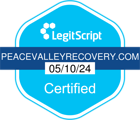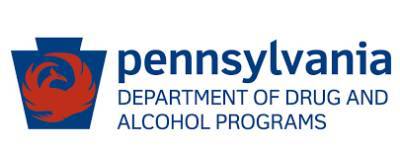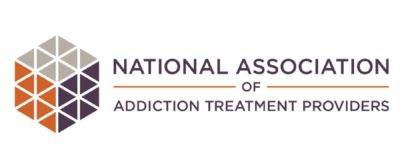Fighting Against Alcoholism During Alcohol Awareness Month
![]() | 4.9 Google Reviews
| 4.9 Google Reviews
![]() | 4.9 Google Reviews
| 4.9 Google Reviews
Peace Valley Recovery is located in Bucks County, Pennsylvania. Our mission is to provide patient-centered care that focuses on healing and recovery from addiction. This blog provides information, news, and uplifting content to help people in their recovery journey.
Fighting Against Alcoholism During Alcohol Awareness Month
Every April marks Alcohol Awareness Month, an important campaign in the fight against alcohol abuse and alcoholism. The campaign provides groups and organizations across the U.S. with a springboard for conversations about alcohol abuse prevention and treatment. Even though many people realize the impact of alcoholism, there is still more work to do.
The need for Alcohol Awareness Month in Pennsylvania is no secret. Alcohol impacts almost everyone’s life in at least some way, especially after this last year. A sharp increase in time spent alone due to COVID-19 sent many people searching for a way to relieve the fear and uncertainty. The rise in rates of alcohol use and abuse signals an ongoing need for awareness and change.
Alcohol Awareness Month offers a reason to reflect on the current state of alcohol use in Pennsylvania and the U.S. as a whole. There’s no better time to learn about the ways alcohol abuse affects both the people who drink and those who love them. What can you do to not only increase your understanding of alcoholism but share it with those around you?
History of Alcohol Awareness Month
Drinking is a prevalent part of society today. You can find a drink just about anywhere you go, from a restaurant to a sporting event to a baby shower. Meeting for drinks is a common way to get to know someone new or to unwind after a long day at work. Plenty of holidays seem to be centered around drinking, too, like St. Patrick’s Day, New Year’s Eve, and even Superbowl Sunday.
When drinking has become an almost societal expectation, it’s easier to overlook a person’s potential problem with alcohol. Drinking is so commonplace in society that recognizing when someone is out of line can be difficult. There’s a notable line between social and problem drinking, though, and knowing where that line lies is important.
Alcohol Awareness Month was founded by the National Council on Alcoholism and Drug Dependence in 1987. NCADD established the campaign to reduce the stigma surrounding alcohol abuse and alcoholism. They aimed to educate people on the signs and symptoms of alcoholism, as well as effective treatment and recovery.

Though the organization is no longer in operation, NCADD’s dedication to increasing public understanding of alcoholism endures. Organizations across the country recognize Alcohol Awareness Month each April and continue the important work that NCADD started. It’s an important part of the fight against the impacts that excessive alcohol use has on people across the country.
Understanding Alcoholism
Millions of people throughout the United States use alcohol regularly. According to the most recent National Survey on Drug Use and Health, 50.8 percent of people ages 12 and older (or 139.7 million people) had at least one drink in the last month. Despite these exorbitant numbers, though, not everyone progresses to the point of problematic alcohol use.
The National Institute on Alcohol Abuse and Alcoholism separates dangerous drinking levels into three stages: binge drinking, heavy alcohol use, and alcohol use disorder. Binge drinking describes any pattern of drinking that brings blood alcohol concentration (BAC) to the legal limit of 0.08 percent or higher. This means about 4 drinks for women or 5 drinks for men in 2 hours. 23.9 percent of people report binge drinking at least once in the past month.
Heavy alcohol use means having 5 or more binge drinking episodes during a 30-day period. Anyone who binge drinks at least 5 times within a month meets the criteria for heavy alcohol use. 5.8 percent of people surveyed reported drinking behaviors that qualify as heavy alcohol use. Drinkers in this category are at a far higher risk of progressing to the point of developing alcohol use disorder.

Alcohol use disorder is a far more serious condition. AUD is characterized by a pattern of compulsive drinking that continues regardless of the negative consequences. The DSM-5 outlines the criteria used to diagnose alcohol use disorder. Clinicians then classify AUD on a spectrum ranging from mild to moderate to severe depending on the number of criteria met.
5.3 percent of those ages 12 and older in the U.S., or 14.5 million people, meet the criteria for an alcohol use disorder. This means 1 in 20 people have at least some level of a compulsive drinking problem in the United States. These staggering numbers are exactly why Alcohol Awareness Month is still necessary.
The Need for Alcohol Awareness Month in Pennsylvania
There’s such an intense focus on the opioid crisis in Pennsylvania that sometimes concerns about alcohol abuse become a second thought. Though opioid abuse in the state is a serious issue, that doesn’t detract from the severity of alcohol abuse. Opioids claim hundreds of lives across the state every year. But alcohol-related deaths are still a problem, too.

SafeHome.org released a study that compiled alcohol-related data on each of the 50 states in the U.S. They determined that Pennsylvania is the 16th heaviest-drinking state in the country. According to their study, 60.7 percent of adults in Pennsylvania report drinking regularly and 28.8 percent binge drink regularly.
Consistent alcohol use, especially binge drinking, places people at risk of both short- and long-term health risks. Preventing excessive alcohol use reduces the chance of having alcohol-related accidents, developing serious conditions, and more.
You should be just as concerned about alcohol abuse in Pennsylvania as other substances. That doesn’t reduce the severity of other substance use disorders but it does mean being attentive to a loved one’s possible alcohol problem. The more you know about alcoholism, the better their chances of getting help sooner rather than later.
Finding Alcoholism Treatment in Pennsylvania
Though many understand the ongoing battle people face when it comes to drinking, both the problem and the stigma still exist. When you understand the truth about alcoholism, you’re better equipped to encourage your loved ones to find effective treatment solutions. The sooner someone gets help for their drinking problem the better.
Finding alcoholism treatment in Pennsylvania is critical for anyone struggling with an alcohol problem. Facilities like Peace Valley Recovery are equipped with the knowledge, compassion, and tools to provide effective alcohol treatment programs. If you have a loved one trapped in the cycle of alcohol abuse, we can help.
Peace Valley Recovery offers one-of-a-kind treatment programs tailored to your loved one and their specific needs. Our adaptable programs allow your loved one to attend treatment while still attending to any existing responsibilities or requirements. Through a combination of therapeutic approaches, we help people build the strong foundation required for long-term recovery.
Want to learn more about the programs we have available here at Peace Valley? Call us or submit an online form today. You and your loved ones don’t need to carry the weight of alcohol abuse on your own. We’re here to walk you through the process of early sobriety and set you up for success so you can lead a life free from the grips of alcohol and other substances.
Sources:
- National Institute on Alcohol Abuse and Alcoholism: https://www.niaaa.nih.gov/alcohol-awareness-month-learn-about-alcohol-use-disorder-and-ways-get-help
- National Institute on Alcohol Abuse and Alcoholism: https://www.niaaa.nih.gov/publications/brochures-and-fact-sheets/understanding-alcohol-use-disorder
- Substance Abuse and Mental Health Services Administration: https://www.samhsa.gov/data/sites/default/files/reports/rpt29393/2019NSDUHFFRPDFWHTML/2019NSDUHFFR1PDFW090120.pdf
- National Institute on Alcohol Abuse and Alcoholism: https://www.niaaa.nih.gov/alcohol-awareness-month-learn-about-alcohol-use-disorder-and-ways-get-help
- SafeHome.org: https://www.safehome.org/drunkest-americans/
You May Also Like to Read
Youth Drinking in Pennsylvania
Youth Drinking in Pennsylvania Authored by Chris Schumacher, | Medically Reviewed by Peace Valley Recovery Editorial Staff, [...]
The Non-Alcoholic Beverage Movement: Is It Helping or Hurting?
The Non-Alcoholic Beverage Movement: Is It Helping or Hurting? Authored by Chris Schumacher, | Medically Reviewed by [...]
The Impact of Alcohol on Physical Health
The Impact of Alcohol on Physical Health Authored by Chris Schumacher, | Medically Reviewed by Peace Valley [...]








